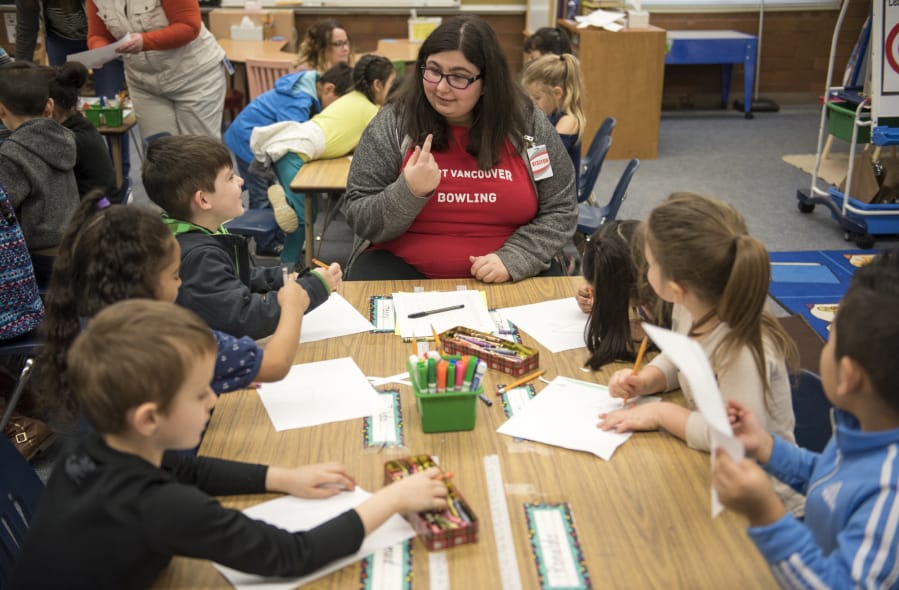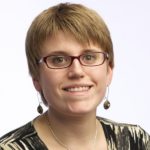Under the watchful eye of Alexandra Mayo, an excited group of kindergartners colored pictures based on one of their classroom books.
Inspired by “An Orange in January,” a children’s book by Dianna Hutts Aston, students in a kindergarten class at Peter S. Ogden Elementary School drew what they imagined might happen to the winter citrus after it’s been harvested.
A grocery store? Someone’s belly? Or something more creative?
“Where do you think the oranges go?” Mayo, a high school senior, asked the students Tuesday.
“In a muffin!” one little boy responded, coloring in a store with a muffin top for a roof.
This is a snapshot of the Careers in Education program at Fort Vancouver High School, which is designed to help train future teachers while they’re still in high school. Students spend the year learning about lesson planning, classroom management and equity in education. Then there’s the cornerstone project: a classroom internship where the high school students work in elementary schools, paired with a mentor teacher to guide them. It’s a firsthand look at what it takes to become a teacher.
“It’s a great way for them to start thinking about their career,” Careers in Education teacher Megan St. Clair said.
The Careers in Education class will expand to a magnet program next year, open to high school students across the district. It will also go from a one-period class to a two-period block, meaning students will have more time for their internship.
“We needed a program that spent more time and attracted students from around the district to come and participate from the program,” said Katie Siewert, the district’s assistant director for career and technical education program.
The program has the added benefit of training its current students for future teaching, in hopes they’ll return to teach in the Vancouver school district. It’s a concept in education known as “growing your own.” Students who take the class can also take the state of Washington’s paraeducator exam, and if they choose to apply for paraeducator positions at Vancouver Public Schools, they will be guaranteed an interview.
With state-mandated primary school class-size reductions and declining enrollment in teaching programs at universities, Vancouver Public Schools and the state at large are facing a teacher shortage, according to the district. The Professional Educator Standards Board reported in 2016 that demand for teachers has increased by 250 percent in the last five years.
The district hopes that continued expansion of this program will help alleviate that, Siewert said.
In particular, Siewert said, the district hopes a diverse group of students, as well as those enrolled in the district’s dual-language programs, will consider exploring teaching as a future career and enroll in the magnet program. While 44.8 percent of students in Washington are non-white, only 10.7 percent of teachers are, according to the Office of Superintendent of Public Instruction. Vancouver Public Schools trends similarly, with a 41.8 percent non-white student body but 12.3 percent non-white teachers. Research suggests students of color benefit from having teachers with similar racial and ethnic backgrounds.
“What we’re trying to do is diversify our teaching force,” Siewert said.
Marvella Ramirez, a 17-year-old senior, has been enrolled in Careers in Education for two years. She said she’s always wanted to be a high school math teacher. Last year, she spent time in a fourth-grade class at Marshall Elementary School, helping small groups of students with their work.
Working directly with students was a lesson in patience for Ramirez, but it also offered its own rewards.
“They were really open with me,” Ramirez said of her students. “They could really count on me.”
Mayo, the senior in the Ogden kindergarten class, said she’s grown from spending time in classrooms.
“I feel like they’re learning from us, but we’re learning from them,” she said.




